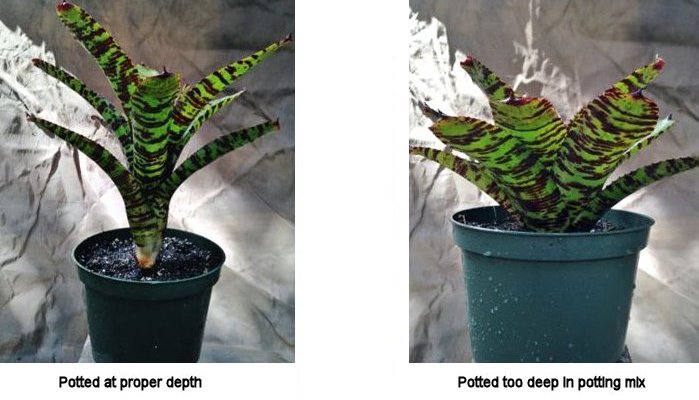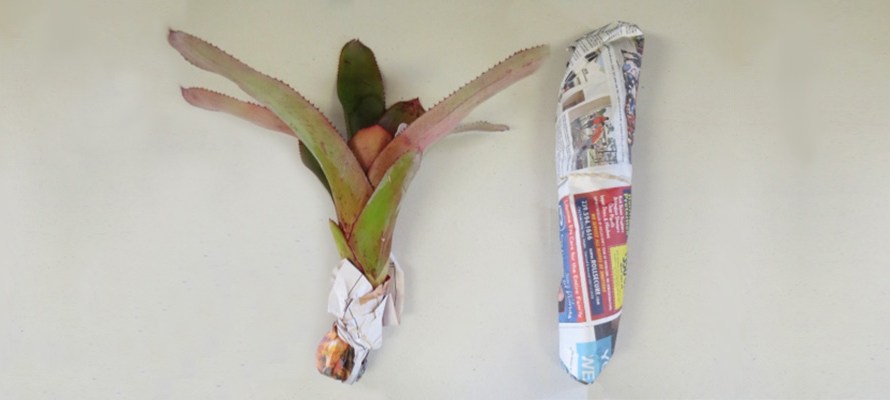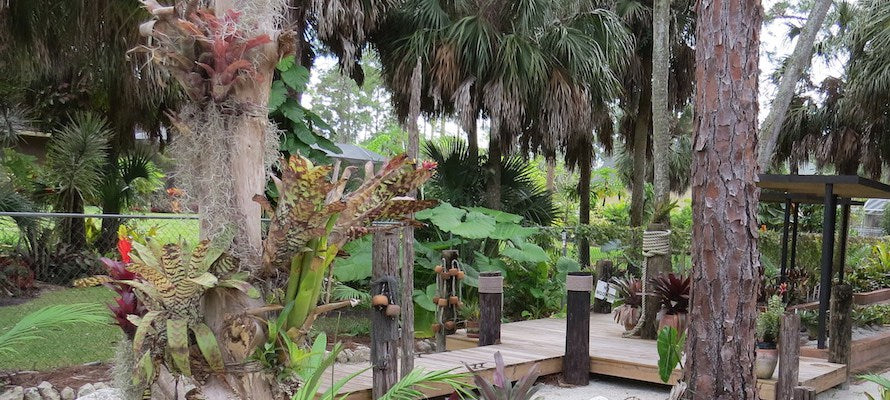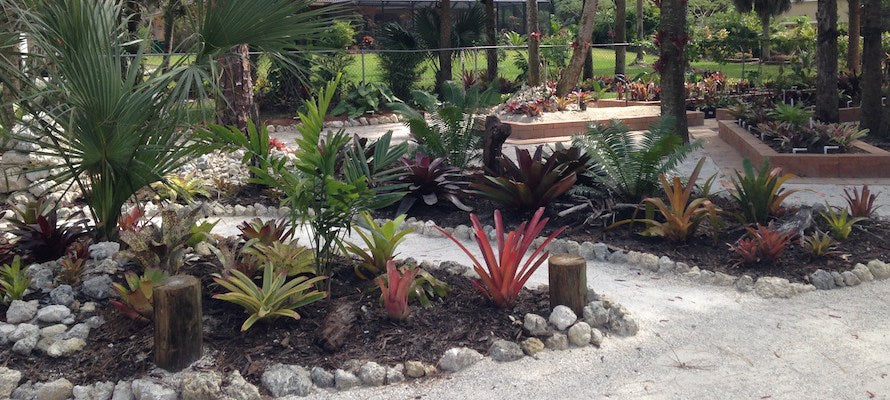Your Cart is Empty
Get Free Shipping on all orders $120 or more.

There are two basic types of bromeliads, terrestrial (plants living in soil) and epiphytic (plants that live on trees or rocks). Some bromeliads will grow either way. It is important for you to determine where your plant fits. This can be done by doing research on the individual species or hybrid or contacting you seller for more information. This information sheet will focus on terrestrial bromeliads, or those that prefer to be “potted up”.
Correctly potting or repotting a bromeliad is very important, just like it is important for most plants. The fact is, a healthy root system for bromeliads is a key to your plants health. Many web sites may tell you that this is not the case, but many bromeliads are lost to this bad advice.
Potting is one of the key success factors in caring for your bromeliad.
Most bromeliads are shipped without soil and not much of a root system (bare root) and do not need large pots. You may be tempted to pot a full-sized bromeliad in a very large pot, but this may be detrimental to root growth because it may hold too much moister and cause the plant to rot away. On the other hand, a pot that is too small may not hold the plant upright. Choosing the right size pot is related to:
This depends on plant size (see below) — large enough to support the plant but small enough to allow the roots to get air. If you over pot, the roots may rot. My rule of thumb is the pot should be small enough to allow the potting medium to dry quickly, but large enough to hold the plant upright and prevent tipping over.
General rule for selecting pot size:
Bromeliads will grow in almost any type of container as long as it has good drainage. Commercial potting mix or soil mix is usually adequate, but can be enhanced to make sure that the soil will dry out. A good rule of thumb is that coarser is better. A lot of successful growers add perlite to the commercial mixes to improve the drainage. Perlite is soft and porous, kind of like styrofoam, and allows the water to flow through the soil quickly. This is a great way to moisten the soil to provide enough water for the roots to take in, but prevent the water from pooling. Adding an inch or two of pea gravel or lava rock to the bottom of the pot will also enhance drainage and add to the stability of the potted plant in general.
When potting, keep the bottom leaves out of the potting medium. This allows the water in the cup to drain quickly. If the bromeliad is planted too deep, the water in the cup will tend to keep the potting medium too soggy, often causing the plant to slowly rot away.
If a plant is able to move around or leans over from watering or from wind, it will have a much harder time rooting. Pack the potting medium firmly around the plant seem to give it support but not so deep as to keep the stem from getting good air movement, you want to se just a little bit of the white under the leaves above the soil level. If the bottom leaves are preventing you from being able to get the stem deep enough, don’t be afraid to remove some of them. You can also try adding pea gravel of lava rock to the base of the plant.
The post Bromeliad Care: Potting appeared first on Bromeliad Paradise.

When a bromeliad is ordered on-line, it will either be taken as an offset from a mother plant, or it will be taken from a pot. Either way, it is possible that it has already started to grow roots.

Bromeliads are a type of plant called epiphytes, which means that they draw moisture from the air and don’t need to be in soil to survive. While their roots can draw water and nutrients, they typically serve as a plant’s ‘anchor’, attaching and holding it place.

Although mosquitoes are not a pest that can harm your bromeliads, they can become very annoying to everyone around them. Mosquitoes are currently a topic of conversation as common sense and the facts often give way to rumor and sensationalism.